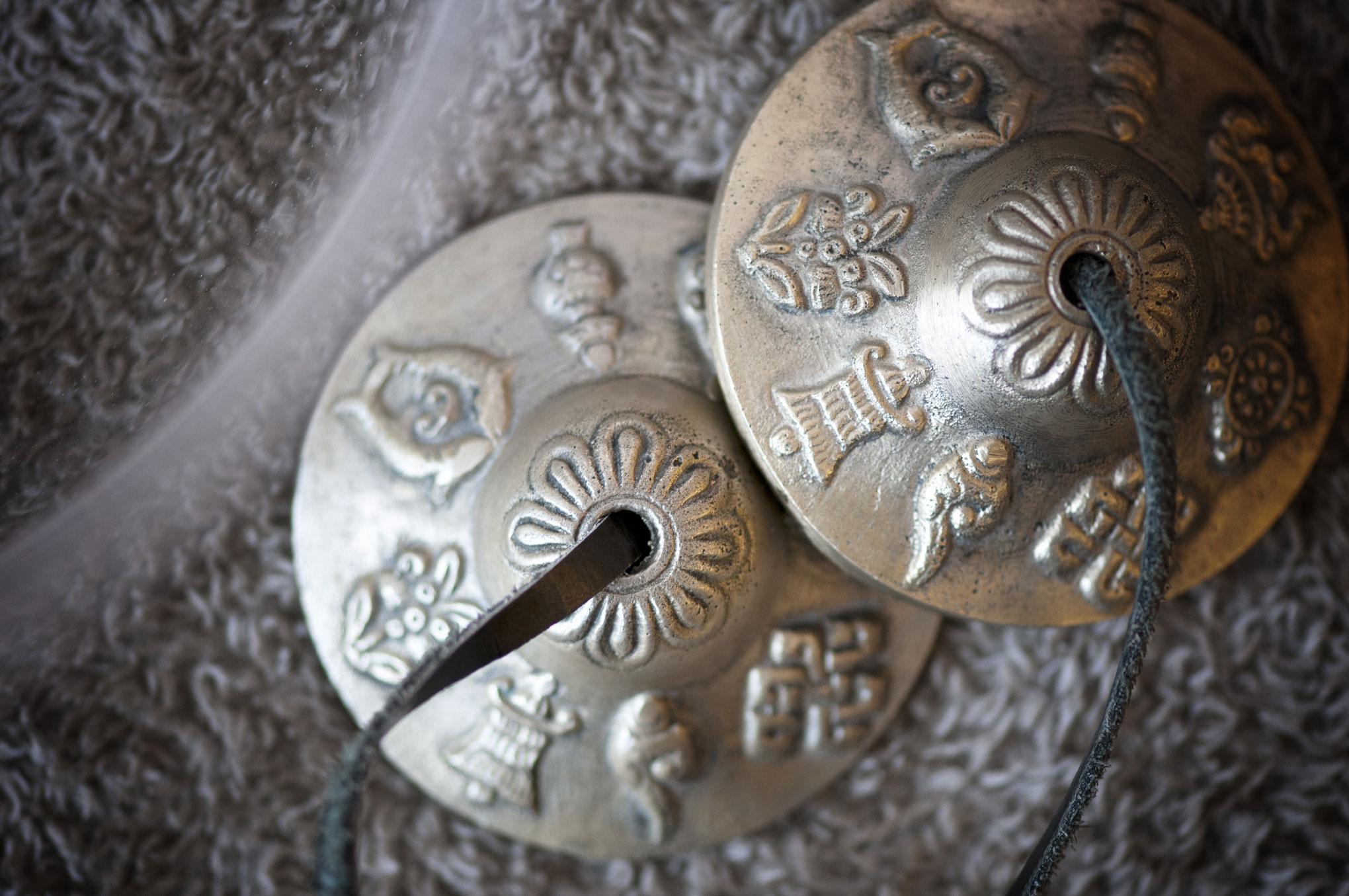
Tibetan bells, also commonly referred to as Tibetan “tingsha” bells or “cymbals,” hold significant cultural, spiritual, and therapeutic importance in various traditions of the Himalayan region. Here’s a brief overview:
- Physical Description: Unlike the singing bowls, which are bowl-shaped, tingsha bells are two small cymbals joined together by a leather strap. When struck together, they produce a clear, high-pitched tone.
- Origins: The tingsha bells have their roots in the shamanic traditions of the Himalayas and have been incorporated into Buddhist practices over the centuries.
- Spiritual and Ritual Use:
- Clearing Space: The sharp sound of the tingsha bells can be used to clear space of negative or stagnant energy, making it conducive for meditation or spiritual ceremonies.
- Marking Transitions: In meditation sessions or ceremonies, the bells can be used to indicate the beginning or the end of a particular segment.
- Chanting and Prayers: Tingshas can accompany chanting or recitation of prayers to keep rhythm or emphasize particular sections.
- Therapeutic Use:
- Sound Therapy: Just as with singing bowls, tingshas have found their way into sound therapy sessions. Their clear, resonating sound can have a calming effect on the mind and is believed by some to promote healing.
- Mindfulness and Attention: The clear tone they produce is often used in mindfulness practices to bring the practitioner’s attention back to the present moment.
- Material: Traditionally, tingsha bells are made of a blend of metals, similar to Tibetan singing bowls. However, the precise composition can vary, and the metals used are often considered a closely guarded secret among traditional makers.
- Symbolism: The surface of tingsha bells is often adorned with symbols, mantras, or other meaningful inscriptions. Common symbols include the “Om” symbol, the eight auspicious symbols of Buddhism, or depictions of deities.
- Care and Playing: Tingshas are relatively hardy, but they should still be handled with care to prevent them from being dented or damaged. They are played by striking the two cymbals together, allowing them to resonate and produce their characteristic clear tone.
In modern times, while they continue to hold spiritual importance in Himalayan traditions, tingsha bells have gained global popularity for their therapeutic properties and are used in various healing and spiritual modalities worldwide.

Tibetan bells, or tingsha bells, have been employed for centuries in Himalayan spiritual traditions. Here are some of the commonly reported benefits associated with the use of these instruments:
Deep Relaxation
The clear and resonating sound of the tingsha bells can induce a sense of deep relaxation. As listeners focus on the pure sound, they can feel a calmness that permeates their mind and body.
Space Cleansing
The sound of the tingsha bells is believed to purify the environment and dispel negative or stagnant energies. They’re often used in rituals, ceremonies, and healing sessions to cleanse a space before starting.
Promotion of Mental Clarity
The distinct sound can help clear the mind of distractions and mental clutter, paving the way for clarity and focus.
Enhancing Yoga Practices
Some yoga instructors incorporate Tibetan bells into their sessions to aid in transitions between asanas (poses) or to deepen relaxation during savasana (final relaxation pose).

Stress and Anxiety Reduction
The harmonic vibrations produced by the bells can create a sense of peace, potentially reducing feelings of stress and anxiety.
Connection to Tradition
For those who use tingsha bells in a spiritual context, the bells offer a sense of connection to ancient Himalayan traditions and practices.
Aid in Transition
The sound can act as a tool to signify transitions, either in meditation, in daily rituals, or even in life ceremonies like funerals, helping individuals move from one state or phase to another.

Sound Therapy and Healing
Some practitioners believe that the vibrations and frequencies produced by the bells can promote healing in the body, mind, and spirit.
Stimulation of Intuition and Creativity
By promoting a clear and focused state of mind, the bells can pave the way for enhanced intuitive insights and foster creativity.
Enhanced Listening Skills
Regular exposure to the clear tones of the bells can sharpen one’s listening skills, increasing sensitivity to nuances in sounds and fostering a deeper appreciation for auditory experiences.
It’s important to approach the use of Tibetan bells, like any tool or practice, with an open mind. Experiences can be subjective and may vary from person to person. Always consider integrating their use with other practices or treatments, especially if addressing specific health or psychological concerns.


